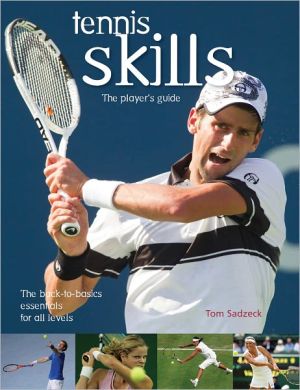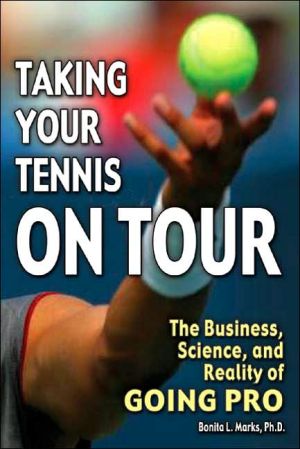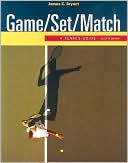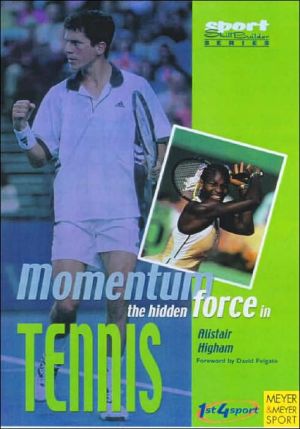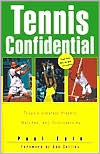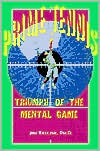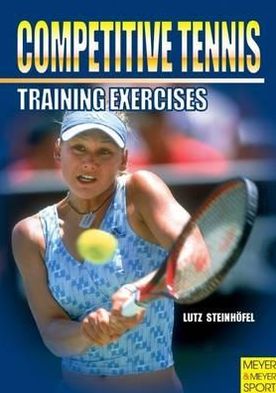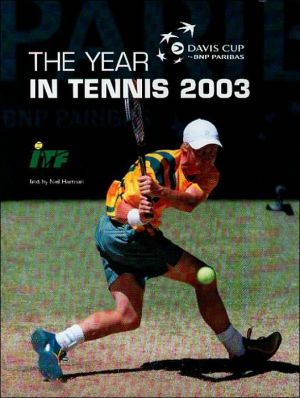Tennis Skills: The Player's Guide
Like having a personal tennis pro on call for expert coaching.\ Tennis Skills is an in-depth guide to improving a player's game. It features a battery of lessons designed by tennis pros that lays down a solid foundation of stroke skills and game strategy. Clear instructions and annotated diagrams provide valuable coaching and corrective techniques -- most valuable for any player.\ Tom Sadzeck provides an abundance of visual features to help players of all levels improve their game. Six...
Search in google:
A fully illustrated, back-to-basics guide to improving your tennis game, the book is fully illustrated with sequential pictures, court diagrams, tips, typical faults, and coaching ideas to build strong foundation skills and great players. Children's Literature Sadzeck, who has been playing and coaching tennis for twenty-five years, begins with the basics in this lavishly illustrated guide to the game. In sections dealing with drills and skills, instructions are accompanied by step-by-step photographs and diagrams. The book is for young readers who have experienced the game on the court and are serious enough about it to want to build on a foundation of skills. It assumes some knowledge of the game, but also includes information about warm-ups, a range of grips and equipment. A glossary of tennis terms is a helpful addition. 2001, Quintet Publishing, $14.95. Ages 10 up. Reviewer: Uma Krishnaswami
Introduction\ Most tennis enthusiasts will probably agree that few things come close to the pure satisfaction of hitting a tennis ball with power and control. Most of you reading this book have probably felt this satisfaction at some point in your tennis-playing experience and are now seeking advice on how to harness this magical feeling. Unfortunately you can't wave a magic wand or sprinkle any magic dust. It takes time, patience, and persistence to advance your game to the next level.\ Most students have better success at developing their game when they begin to understand tennis concepts. A bigger picture needs to be painted in the mind's eye before a good understanding can occur. This big picture is created by the ability to see what it is you need to do with your game, how to do it, and how you can analyze it. You must take on the responsibility of becoming your own coach. Even if you take private lessons from a professional instructor you will still need to take the information he or she has given you and be able to translate it in your own way and on your own timetable.\ You need to establish your own personal tennis program. This should include a good balance of conditioning, match play, rest, and practice. But not just practice: it has to be proper practice, which involves:\ \ development of fundamental stroke technique strategy\ isolation of common situations and patterns\ footwork drills\ understanding opponents' strengths and weaknesses\ mental training under pressure conditions\ maintaining stimulation through hours of repetition during these practice activities.\ \ This may sound like a big mountain to climb, butwith proper guidance and an optimistic outlook, you should be able to achieve a higher level of play. \ \ This book is set up with this balance in mind. The first chapter provides basic instructional information on how to correctly hit a variety of shots. Whether you're just beginning to play the game or are an advanced player, you'll find the explanations simple and to the point. The photographs of professional players make it look easy as they demonstrate proper stroke technique.\ The remainder of the book corresponds with the first chapter by allowing you to practice your stroke technique under various conditions. These conditions allow you to practice important aspects of your game such as consistency, accuracy, movement, timing, patterns, strategy, and pressure.\ Throughout the book we'll talk a lot about the comparisons between the way the game is played at the professional level and the way it is played at the recreational level. A clear distinction should be understood from the outset. There are two important issues to point out. First of all, we need to watch what professionals are doing so that we can try to advance our level of play by copying their actions. I believe that the best way to learn is to watch or visualize a correct motion, and then try to imitate by repetition.\ The second important issue is that professionals have been training for years against other top professionals. Recreational players have more limitations to their time, and athletic ability. We need to keep this in perspective whenever we try to imitate Pete Sampras and his 120-m.p.h. (193 k.p.h.) serve. Recreational-level tennis is not quite the same, as we'll see throughout the book.
IntroductionTennis TalkThe BasicsEquipmentGripsStroke Production SkillsTarget DrillsCooperation DrillsStrategy and Situation DrillsPressure DrillsFootworkIndex
\ Children's LiteratureSadzeck, who has been playing and coaching tennis for twenty-five years, begins with the basics in this lavishly illustrated guide to the game. In sections dealing with drills and skills, instructions are accompanied by step-by-step photographs and diagrams. The book is for young readers who have experienced the game on the court and are serious enough about it to want to build on a foundation of skills. It assumes some knowledge of the game, but also includes information about warm-ups, a range of grips and equipment. A glossary of tennis terms is a helpful addition. 2001, Quintet Publishing, $14.95. Ages 10 up. Reviewer: Uma Krishnaswami\ \
